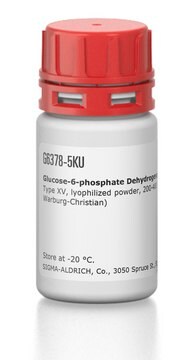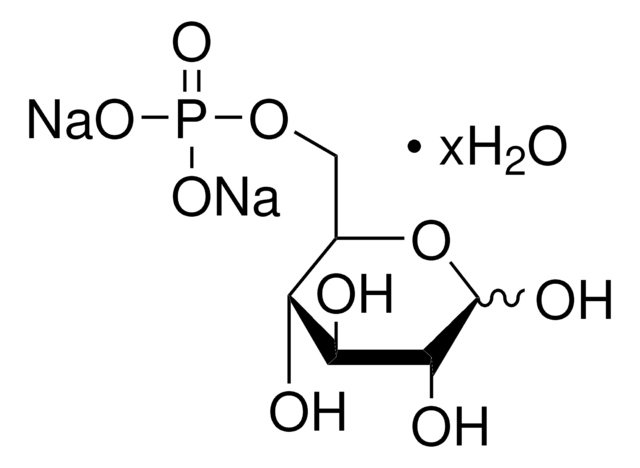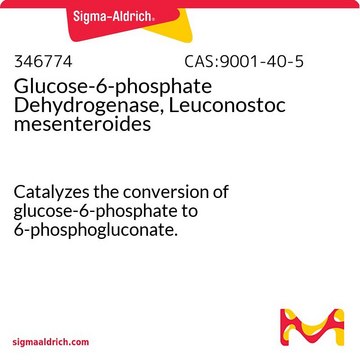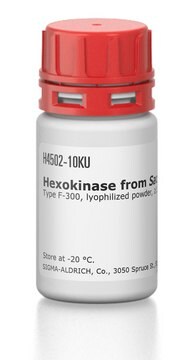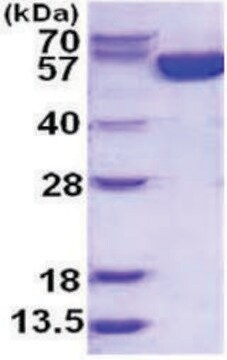10127655001
Roche
Glucose-6-Phosphate Dehydrogenase (G6P-DH)
grade I, from yeast
Synonyme(s) :
G6P-DH, Glucose-6-Phosephate Dehydrogenase
About This Item
Produits recommandés
Source biologique
yeast
Niveau de qualité
Forme
suspension
Activité spécifique
~350 units/mg protein (At 25 °C with glucose-6-P as the substrate.)
Conditionnement
pkg of 1 mL (5 mg/ml)
Fabricant/nom de marque
Roche
Concentration
≥0.1-1.0 % (w/w)
Technique(s)
activity assay: suitable
Couleur
white to yellowish
pH optimal
9.2
Solubilité
water: miscible
Adéquation
suitable for UV spectrophotometry and general use
Numéro d'accès NCBI
Numéro d'accès UniProt
Application(s)
life science and biopharma
Activité étrangère
6-PGDH <0.0100%
CK <0.00100%
GR <0.0100%
HK <0.0100%
PGI <0.00200%
PGluM <0.0100%
Conditions d'expédition
wet ice
Température de stockage
2-8°C
Informations sur le gène
Saccharomyces cerevisiae ... ZWF1(855480)
Catégories apparentées
Description générale
Application
Actions biochimiques/physiologiques
Caractéristiques
Forme physique
Notes préparatoires
Autres remarques
Code de la classe de stockage
12 - Non Combustible Liquids
Classe de danger pour l'eau (WGK)
WGK 1
Point d'éclair (°F)
does not flash
Point d'éclair (°C)
does not flash
Certificats d'analyse (COA)
Recherchez un Certificats d'analyse (COA) en saisissant le numéro de lot du produit. Les numéros de lot figurent sur l'étiquette du produit après les mots "Lot" ou "Batch".
Déjà en possession de ce produit ?
Retrouvez la documentation relative aux produits que vous avez récemment achetés dans la Bibliothèque de documents.
Les clients ont également consulté
Notre équipe de scientifiques dispose d'une expérience dans tous les secteurs de la recherche, notamment en sciences de la vie, science des matériaux, synthèse chimique, chromatographie, analyse et dans de nombreux autres domaines..
Contacter notre Service technique